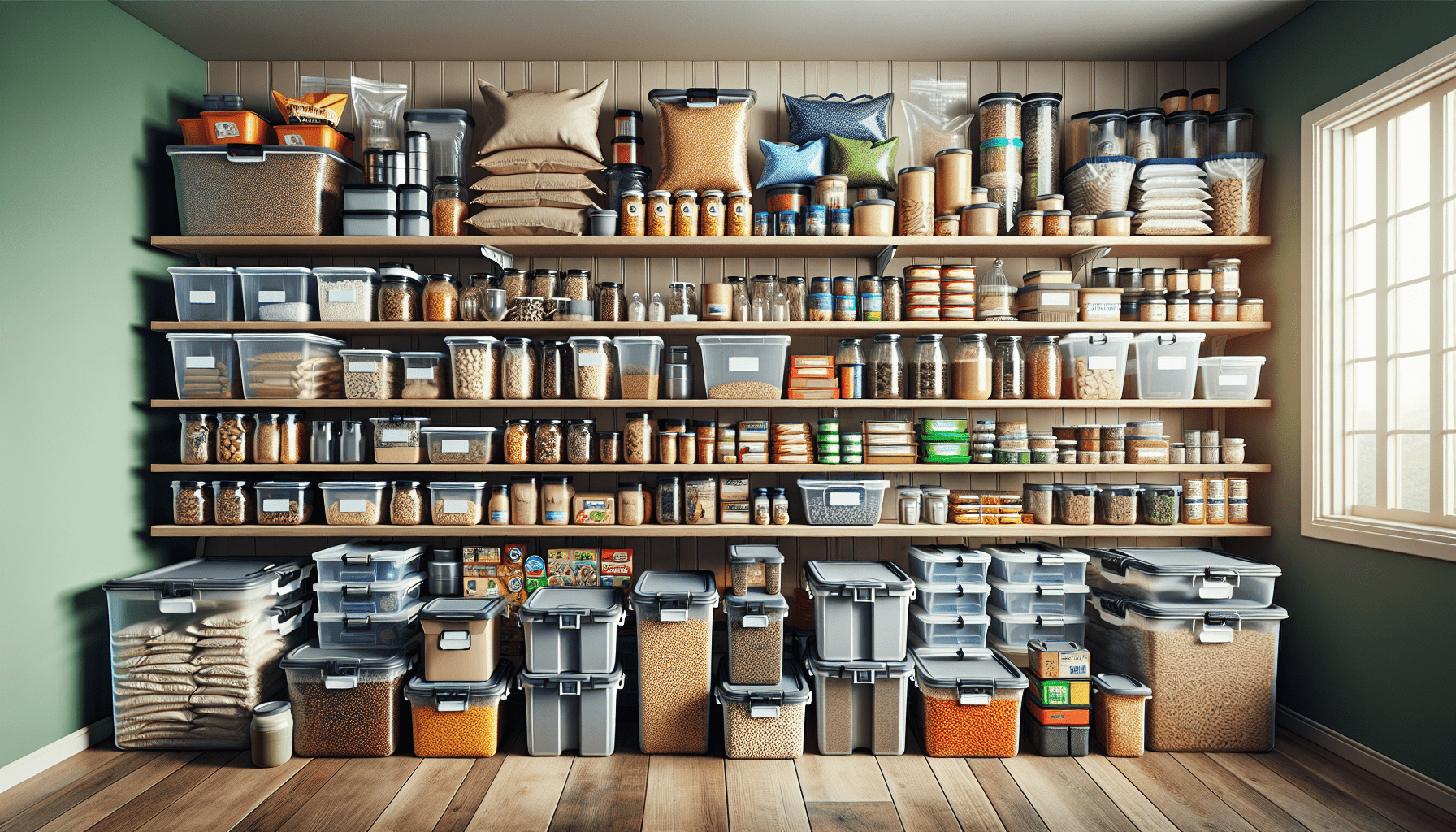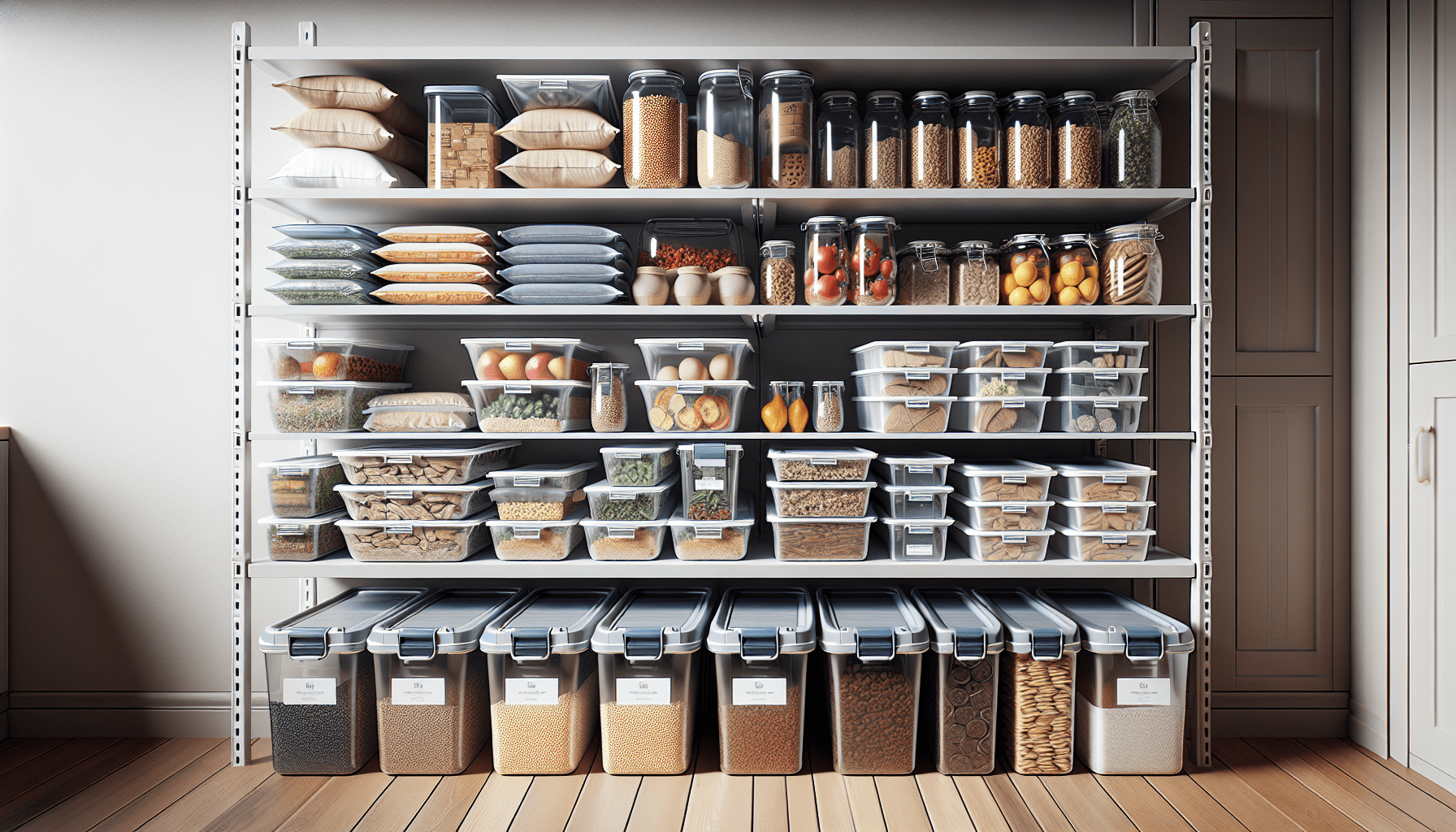Have you ever thought about what types of emergency food storage containers are best for ensuring your supplies remain fresh and safe? Whether you’re preparing for a natural disaster, economic uncertainty, or just want to be ready for unexpected events, having reliable storage solutions is crucial. In this article, we’ll break down the various types of emergency food storage containers that are recommended, including their features, benefits, and how to choose the right one for your needs.

Why Emergency Food Storage Is Important
In times of crises, having a dependable stash of food can make all the difference in your peace of mind and overall well-being. But it’s not just about having the food; it’s about how you store it. Proper storage can extend the shelf life of your food, maintain its nutritional value, and protect it from pests and spoilage.
Characteristics of Ideal Emergency Food Storage Containers
When choosing the right containers for storing your emergency food, there are several key characteristics to consider.
- Durability: The container should be robust enough to withstand environmental stresses such as temperature changes and physical impacts.
- Airtight Seal: This feature is vital to keep out moisture and pests that can spoil the food.
- Material Safety: Ensure the materials are food-grade and free from harmful chemicals.
- Stackability: Space-saving features are crucial for practical storage solutions.
- Ease of Access: Containers should allow for easy access so you can retrieve and use your food quickly when needed.
Types of Emergency Food Storage Containers
Mylar Bags
Mylar bags are a popular choice for long-term food storage. They offer excellent protection against light, moisture, and oxygen, which are the main culprits of food degradation.
Pros:
- Lightweight and space-efficient.
- Excellent barrier properties against moisture and oxygen.
- Can be heat-sealed for an airtight seal.
Cons:
- Often need an additional outer container for added protection.
- Not puncture-proof.
Vacuum-Sealed Bags
Vacuum-sealed bags remove air from the package, prolonging the shelf life of food by reducing oxygen exposure.
Pros:
- Keeps food fresher for longer.
- Space-efficient due to compact packing.
- Suitable for a variety of foods, including solids and liquids.
Cons:
- Requires a vacuum sealing machine.
- Bags can puncture if not handle carefully.
Plastic Buckets with Gamma Lids
High-density polyethylene (HDPE) plastic buckets with gamma lids are another fantastic option. These are sturdy, BPA-free, and the gamma lids ensure an airtight seal.
Pros:
- Extremely durable and reusable.
- Airtight and moisture-proof with gamma lids.
- Ideal for storing large quantities of food.
Cons:
- Bulky and space-consuming.
- Can be cumbersome to carry when full.
| Bucket Size (gallons) | Ideal For |
|---|---|
| 2-3 | Small batches of food |
| 5 | Bulk grains and legumes |
| 6-7 | Larger quantities of dry goods |
Glass Jars
Glass jars, such as Mason jars, are excellent for storing a variety of foods. They are non-reactive and offer an airtight seal when paired with proper lids.
Pros:
- Non-reactive and safe for all types of food.
- Airtight and pest-resistant.
- Transparent, allowing you to see the contents.
Cons:
- Fragile and prone to breaking.
- Heavier compared to other materials.
Metal Cans
Metal cans, used primarily for commercially canned foods, provide excellent protection against light, pests, and physical damage.
Pros:
- Extremely durable.
- Impermeable to light and pests.
- Long shelf life for contents.
Cons:
- Not reusable once opened.
- Can be difficult to open without proper tools.
Commercial Food-Grade Plastic Containers
These containers are specially designed for food storage and are typically used in stores and restaurants. They come in various shapes and sizes, offering flexibility.
Pros:
- Durable and reusable.
- Available in a wide range of sizes.
- Commonly come with built-in airtight features.
Cons:
- Can be expensive.
- Bulky and may require significant space.
Food-Grade Pouches
These are pre-filled, often with dehydrated or freeze-dried foods, which can last for years when stored properly.
Pros:
- Convenient and typically ready to eat.
- Lightweight and portable.
- Extended shelf life.
Cons:
- Single use, thus creating waste.
- Can be more expensive per meal compared to bulk storage.
How to Choose the Right Storage Containers
Choosing the right storage containers depends on various factors, including the type of food, duration of storage, and available space.
Food Type and Packaging
Certain containers are better suited for specific types of food. For example:
- Grains and Legumes: Store them in plastic buckets or Mylar bags.
- Dehydrated or Freeze-Dried Foods: Keep them in Mylar bags or food-grade pouches.
- Canned Goods: Store commercially canned foods in metal cans or use glass jars for homemade preserves.
Storage Duration
For short-term needs, vacuum-sealed bags and commercial plastic containers are excellent. For long-term storage, Mylar bags and food-grade plastic buckets are preferable.
Space Availability
Consider how much storage space you have. If you’re limited on space, smaller containers like vacuum-sealed bags or food-grade pouches can be more practical.
Budget Considerations
While some storage options may require an initial investment, like gamma lids or vacuum sealers, they often pay off in the long run by extending the shelf life of your food and preventing waste.
Climate and Environment
Your local climate can also impact your food storage choices. In humid climates, airtight containers are crucial to keep moisture out. In areas prone to earthquakes, opt for shatter-resistant containers like plastic buckets or metal cans.

Tips for Optimizing Food Storage
Proper food storage goes beyond just choosing the right containers. Here are some additional tips to optimize your emergency food storage:
Label Everything
Always label your containers with the date of storage and contents. This helps in rotating your supplies, ensuring you use older items first.
Store in a Cool, Dry Place
Temperature and humidity can significantly impact the shelf life of your food. A cool, dry place is ideal for most storage options.
Use Oxygen Absorbers and Moisture Absorbers
These can prolong the shelf life of certain foods by removing excess oxygen and moisture.
| Absorber Type | Suitable For |
|---|---|
| Oxygen Absorbers | Grains, pasta, dehydrated meals |
| Moisture Absorbers | Salt, sugar, dry beans |
Regular Inspections
Periodically check your food storage to ensure there are no signs of spoilage or pest infestations. This is also a good time to rotate items and replace anything that’s nearing its expiration date.
Conclusion
Choosing the right emergency food storage containers can seem overwhelming, but understanding the different options available and their specific benefits can make the process much easier. Whether you opt for Mylar bags for their excellent barrier properties, plastic buckets for their durability, or glass jars for their safety, each type has its unique advantages that can meet your individual needs.
Investing time and thought into your emergency food storage plan now can save you a lot of trouble in the future. With the right containers and practices in place, you can ensure that your food supply remains fresh, safe, and ready when you need it most. So take the next steps toward securing your emergency food storage and provide peace of mind for you and your loved ones.

